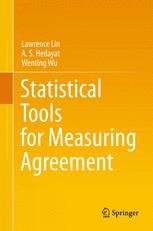

Most ebook files are in PDF format, so you can easily read them using various software such as Foxit Reader or directly on the Google Chrome browser.
Some ebook files are released by publishers in other formats such as .awz, .mobi, .epub, .fb2, etc. You may need to install specific software to read these formats on mobile/PC, such as Calibre.
Please read the tutorial at this link: https://ebookbell.com/faq
We offer FREE conversion to the popular formats you request; however, this may take some time. Therefore, right after payment, please email us, and we will try to provide the service as quickly as possible.
For some exceptional file formats or broken links (if any), please refrain from opening any disputes. Instead, email us first, and we will try to assist within a maximum of 6 hours.
EbookBell Team

4.1
30 reviewsAgreement assessment techniques are widely used in examining the acceptability of a new or generic process, methodology and/or formulation in areas of lab performance, instrument/assay validation or method comparisons, statistical process control, goodness-of-fit, and individual bioequivalence. Successful applications in these situations require a sound understanding of both the underlying theory and methodological advances in handling real-life problems. This book seeks to effectively blend theory and applications while presenting readers with many practical examples. For instance, in the medical device environment, it is important to know if the newly established lab can reproduce the instrument/assay results from the established but outdating lab. When there is a disagreement, it is important to differentiate the sources of disagreement. In addition to agreement coefficients, accuracy and precision coefficients are introduced and utilized to characterize these sources.
This book will appeal to a broad range of statisticians, researchers, practitioners and students, in areas of biomedical devices, psychology, medical research, and others, in which agreement assessment are needed. Many practical illustrative examples will be presented throughout the book in a wide variety of situations for continuous and categorical data.